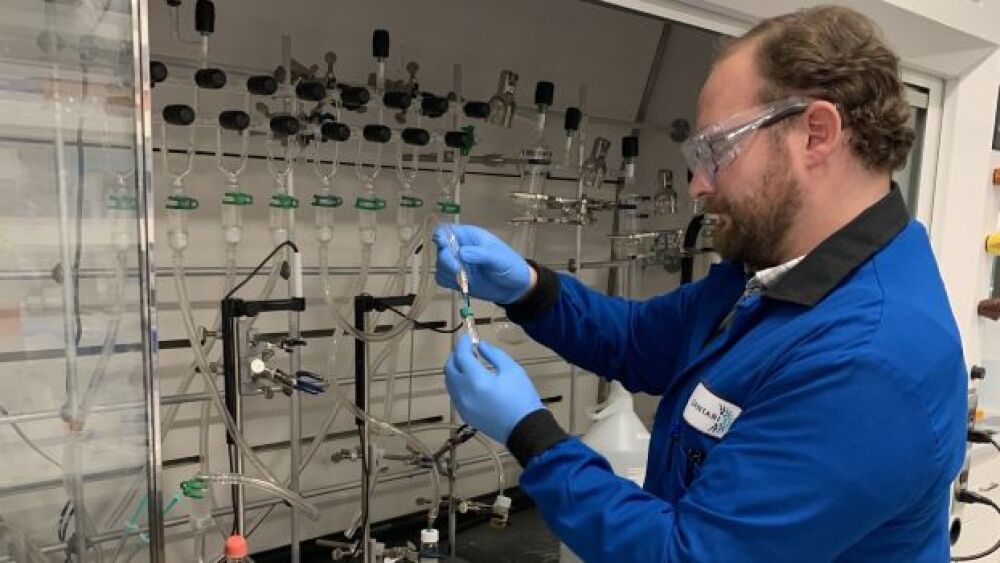With $47 million in hand, Dantari launched Thursday to advance its Targeted High-capacity Drug Conjugate technology – its take on an antibody-drug conjugate - for solid tumors.
A Dantari Researcher in the lab/courtesy of Dantari, Inc.
With $47 million in hand, Dantari, Inc. launched Thursday to advance its Targeted High-capacity Drug Conjugate (T-HDC) technology - its take on an antibody-drug conjugate - for solid tumors.
Dantari’s lead candidate is an HDC chemotherapeutic agent with a topoisomerase 1 (topo1) inhibitor payload, dubbed DAN-222.
The company is led by Richard A. Markus, M.D., Ph.D., president and CEO. In an interview with BioSpace, he explained the difference between traditional ADCs and the T-HDC technology.
“There are two features [that differentiate the technology]: the tunability and the high capacity,” Markus said.
Compared to other ADCs, the T-HDC technology allows for a significantly higher drug-antibody ratio (DAR) and “tunable release” of chemotherapy. This enables the therapeutics to deliver larger payloads.
Sean Harper, M.D. is the co-founder and managing director of Westlake Village BioPartners, which led the Series A financing. He discussed the limitations of currently available ADCs.
“Current ADCs have come a long way and offer cancer patients very important therapeutic options,” Harper told BioSpace. “However, they suffer from a number of important limitations.”
The first, he said, is that the highest DAR on the market is eight, whereas Dantari’s T-HDC technology has a DAR of 60. Second, he said the release of the chemotherapy payload from ADCs can be poorly controlled, causing dose-limiting toxicities. And third, ADCs depend on the antibody for biodistribution in the body, so they do not spare the bone marrow.
One of the biggest challenges Dantari has been able to overcome, Markus said, is manufacturing.
“We control the polymer size quite well in manufacturing, and we control the loading factor very well. So, we have very good control over these two key capabilities,” he said. “And that’s been proven by the fact that we’ve been able to take it into the clinic for our first program.”
As for how the company will overcome any other challenges that come its way, Harper’s plan is simple: generate compelling data in the clinic.
DAN-222 is being studied in a Phase I/II trial as a treatment for metastatic, HER-2-negative breast cancer. Dantari also has another candidate for HER2-positive and HER2-low breast cancer, DAN-311, which is expected to enter clinical trials in late 2023. There are several other T-HDC candidates in preclinical development as well.
Early Phase I data on DAN-222 will be presented Thursday at the San Antonio Breast Cancer Symposium. Full results, Dantari stated, will be presented at a future forum.





